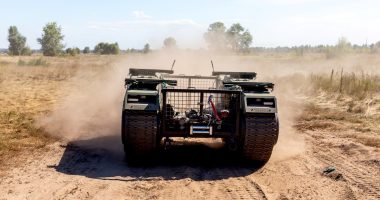
Children who survived the worst of the 2009 wildfires in Victoria, Australia performed more poorly than expected on standardized tests years later, particularly compared to their peers in regions that escaped the flames, new research says. The findings suggest that as communities around the world wrestle with more frequent and more severe fires, there may be consequences that last long after the smoke clears.
In February 2009, the Black Saturday wildfires burned more than 1,500 square miles in Victoria. The inferno killed 173 people, and destroyed 2,000 homes, three schools, and three pre-schools. A new study, published Wednesday in the journal Child Development, tracks the test scores of students who attended severely affected schools. And it reports that on average, their academic progress on reading and arithmetic lagged compared to students in areas that were less badly burned, even years after the fires.
The study didn’t investigate why the kids’ academic trajectories didn’t take off the way they should have. It could have been the initial trauma of the fire, or the loss of homes and loved ones. It could have been ongoing disruptions to their home life that made it hard for the kids to study, or sleep. It could be that devastation to schools and teachers’ lives made it hard to teach, which made the kids fall behind. Or it could be some awful combination of all those things. ”The effect of a disaster goes well beyond what happened on the day,” says Lisa Gibbs, a public health professor at the University of Melbourne who led the study. “It’s all the disruption that happened afterwards, and the loss, and the grief. There’s so much.”
Whatever the underlying cause, this study adds to a growing body of evidence that when kids are in crisis, they can have trouble concentrating and learning. “There are a cascade of secondary losses and stressors,” says David Schonfeld, the director of the National Center for School Crisis and Bereavement at USC, who did not participate in this study. And the recovery process can sometimes extend over years, he says. “It’s not surprising there would be academic impacts; it would be surprising if there weren’t.”
Gibbs and her team, including clinical neuropsychologist Jane Nursey, wanted to find out to what degree a massive disaster would affect students in the years that followed. So the researchers analyzed the test scores of more than 24,000 children in Victoria. They split the schools into three categories based on how badly they were affected by the wildfires. There were 78 elementary schools serving the most devastated areas, 50 in the moderately impacted neighborhoods nearby, and 1,073 that suffered minimal damage and no deaths.
The kids were in first grade when the fires burned through the region, and two years later they took a series of standardized tests when they were in third grade. Then, they took another set of tests in fifth grade. The team compared the fifth grade scores to the third grade scores to see how they improved overall. They found that the kids in the badly burned areas didn’t improve at reading and arithmetic as much as their peers in less affected schools. (There weren’t any significant impacts on the writing, spelling, and grammar test scores, however.)
That means the wildfires were still affecting kids four years later, and there could be a couple of reasons for it. The schools might have been damaged, and teachers could be trying to cope with the aftermath of the fires on their own lives, too. That could disrupt the teaching curriculum at key periods of skill-building. But Gibbs and her co-authors suspects that since only certain subjects were affected, it may have more to do with the kids’ mental development and wellbeing after the trauma of the fires and the stressors that followed.
There are a few caveats to the study. For one thing, the study looks at the kids overall, and doesn’t didn’t dig into individual differences and scores. The bigger catch is that the study didn’t include kids who had to switch schools after the fires, which could mean the results we’re seeing are an underestimate of the fires’ consequences. After all, kids who had to relocate and switch schools were the ones whose lives who were especially changed by the fires.
So what does that mean for the parents, educators, and government representatives of the children who have survived other fires — like the fires that raged through California last year? Schonfeld at USC says the first step is to try and reduce the risk of disasters in the first place. Wildfires are increasing in frequency and severity, he says. “That’s the first thing that we need — to try and reverse that trend.”
The findings also highlight the importance of ensuring students have fundamentals like food, shelter, a safe place to sleep, a quiet place to study. Schonfeld points out that homeless students regularly struggle with the same uncertainty and loss that affects children impacted by disasters like fires. “If you don’t meet the basic needs, children really can’t focus on academics,” he says.
It might seem trivial to talk about test scores when kids might have lost family, their homes, and their communities. But school can be a window into how a kid is doing internally. “It’s an indicator that they’re not coping so well,” Gibbs says. And those early years influence their aspirations, which is why it’ll be important to monitor and support kids after a disaster over the long term. “It can affect their employment prospects and future income. It’s actually really important,” she says. “It’s the start of their life.”
This article is from The Verge









